Crime on the Forecourt has long been a huge headache for the petrol retailing fraternity, as was confirmed by a recent survey which showed that safety and security at work concerned nearly half of all forecourt staff questioned.
The survey - by research company HIM, as part of its Convenience Tracking Programme - revealed that despite increased industry efforts, many forecourt staff felt their employers weren’t doing enough to protect them against the consequences of crime. In fact only 39% felt that their head office was doing enough to prevent a crime taking place in their particular store. And at a time when gun crime is on the rise, the threat felt by anyone working on a forecourt must be taken seriously.
There’s no doubt that crime is still a big problem on forecourts, as shown by the latest figures released by the British Oil Security Syndicate (BOSS), which reveal that in 2005 crime cost the industry an estimated £26.2m - up from £25.7m in 2004. Drive-offs represented two-thirds of total losses - at £17m - costing retailers almost £1m more than the previous year.
But these increases should be considered against a backdrop of ever-rising fuel prices, says BOSS director Kevin Eastwood: "Fuel was worth much more in 2005 - 89.1ppl on average against 81.6ppl the year before. So despite a 9% rise in prices, total losses increased by less than 2%, illustrating that the efforts of the industry to work in partnership with police forces around the country are making an impact." In addition to this, says Eastwood, efforts to improve site safety and tighten security overall seem to be paying off with incidents of physical violence and robbery down to 14.3 per 100 sites in 2005, compared with 16.9 in 2004, with fewer burglaries - 8.5 per 100 sites, compared with 11.7 in 2004. Weapon-related incidents also fell, although, more worryingly, there was an increase in the use of guns.
Eastwood says BOSS will be stepping up its efforts this year, focusing on "reducing theft, anti-social behaviour, assaults on staff, burglary and robbery". He adds that new techniques, which will offer a "more robust and effective way to tackle crime", will be unveiled at Easter.
While some retailers continue to despair at a perceived lack of police interest in their problems, the Forecourt Watch model established by BOSS continues to be adopted by forces across the UK. There are currently 73 schemes running, with several new ones being launched this year. Among these will be a new package of measures put together by Northamptonshire Police, due to be launched on April 1, including new-style BOSS self-reporting forms and pos material, such as ’hot registration’ posters. Cambridgeshire Constabulary is also planning a force-wide launch, according to BOSS information.
Eastwood says that where schemes are put in place forecourt crime frequently tumbles by more than 50%, and sometimes in excess of 70%. West Midlands Police, for example, recently launched a scheme to cover its M1 division in Coventry and, according to Eastwood, has reported not only an overall reduction in forecourt-related incidents, but also a major increase in people returning to pay after claiming they’d had no means of payment.
While violent incidents involving forecourt staff continue to hit the headlines, a campaign run by Total UK in conjunction with Crimestoppers has had positive results. The Anti-Assault and Robbery campaign offers cash rewards for members of the public who come forward with information on perpetrators, and is combined with the latest CCTV technology and increased staff training.
Peter Camilletti, Total UK security advisor, says: "In 2001, Total UK was experiencing, on average, around 16 robberies a month - this has dropped considerably. Our solution has been to seek closer bonds with the communities in which our service stations operate.
"It’s also about putting the risk back on the criminal: we want them to be aware that we will actively pursue and prosecute anyone who commits a crime on one of our forecourts."
Kevin Friend, director of strategic accounts (retail) at ADT, says that sound security is a basic health and safety requirement, particularly where sites are operating late at night with fewer staff: "You always need to do a thorough risk analysis, taking into account the specific area a site is in and problems faced in the past.
"You need to look at the design and layout of the forecourt and store to see where improvements might be made - a simple reworking of space in-store can instantly reduce shrinkage.
"If you are new to an area then the local crime prevention officer should be able to give you advice," he adds.
== CLEVER CCTV ==
Used effectively, CCTV is a powerful tool in the fight against crime and modern equipment is becoming increasingly sophisticated. The latest systems are not only designed to be easier to operate - meaning they’re more likely to be used properly - but can also intelligently analyse data, making security breaches easier to detect. The most proactive systems can set alarms to alert a retailer as an incident is occurring, while Internet Protocol technology (IP) allows site owners to monitor and control equipment at several locations via the internet or a mobile phone.
David MacHale, marketing manager at Torex Retail, comments: "In the past, many retailers just had a security system in place for insurance reasons. People are now coming round to the idea that there’s a return on investment for the systems they install." Torex has worked in partnership with two companies - Big Brother and Lee Rose - to integrate CCTV systems into their epos solutions. The Big Brother system, which can be installed from around £7,500, is currently in use on around 50 sites in the UK and Ireland, mostly in smaller independents. It interfaces with the pump-control system and cash register. When the customer picks up the pump a dome camera takes a picture of them, their car and the number plate. These images are then linked to that particular transaction.
MacHale adds: "If you’ve invested in a quality system, make sure people know it’s there. We advise retailers to have an LCD screen in-store showing footage that’s being recorded. It acts as a deterrent and also lets customers and staff know that you’re trying to keep them safe. Many garages also print off images of vehicles or thieves and put them up in the shop. Again, it highlights the clear evidence produced and should make people think twice."
Modern CCTV systems are also very useful for monitoring till transactions. Billy Tank, managing director of epos provider Indigo, says: "Statistics have shown that staff theft can account for up to 40% of all theft from a store. Monitoring cashiers is not only security for the retailer, it also benefits all the honest staff working in petrol stations."
Indigo’s CCTV Controller software can superimpose audit data onto images recorded from a camera placed behind the till, allowing the retailer to see exactly how each transaction is processed. Images can be viewed and printed through Indigo’s Retailer Controller back office system, or viewed live over the internet from any location. Indigo’s solutions cost upwards of £2,500, depending on whether existing cameras can be used.
== DIGITAL AGE ==
Digital video recorders (DVRs) are rapidly becoming the standard format for storing CCTV footage, although some sites may still be using older-style video recorders. These are more time-consuming to manage and image quality will degrade with the age of the tape, meaning footage may be too poor to use as evidence. But the good news is that most sites can upgrade to digital quite easily, often without having to replace existing cameras.
James Somerville-Smith, UK marketing manager for Honeywell Video, says digital recorders have really hit the mass market over the past few years and are generally now affordable for most commercial premises. "Modern DVRs are easy to use and allow you to search for and pull off the information you want more quickly." Honeywell offers an entry-level DVR, called the HRDE 4x4, which Somerville-Smith says allows smaller sites to make the transition to a more advanced recorder, and can be linked to up to four cameras.
At the upper end of the market, Honeywell also supplies the Fusion DVR, which AGE Systems has recently specified and installed into around 40 BP company-owned forecourts, including some M&S Simply Food sites.
AGE director, Jason Gargiulo, says this latest system offers several enhancements over older-style ’embedded’ DVR units: "Most importantly, we are able to integrate other solutions, offering additional functions, into the Fusion," he explains. "This allows us to provide more cost-effective solutions, such as advanced access control and point of sale integration linked to video footage, with full transaction searching capabilities. Other integrated technologies are also planned, such as scene-sensing analysis and the machine will evolve over time."
AGE is also working with Genesis UK and Honeywell on a joint project to integrate automatic number plate recognition (ANPR) into the Fusion system. Seen by some to be the answer to ending all drive-offs, ANPR systems remain expensive. "Unless a site suffers very heavily from bilkings, ANPR is still uneconomical for most to install," says Gargiulo. "Being able to run an ANPR programme on a CCTV unit, instead of installing a separate machine, would significantly reduce the costs." Even so, the lack of a central database continues to limit the usefulness of ANPR. Gargiulo comments: "If you had a national database that ANPR companies and forecourts could subscribe to, you’d almost eliminate the problem of drive-offs overnight - you’d be able to track a car as it moved around the country. But at the moment police forces are very fragmented; they’re all pulling in different directions and favouring different systems."
== SHOP CRIME ==
As forecourt stores have got bigger, so too has the problem of shoplifting. This has seen some larger sites adopting equipment more commonly seen in high street stores, such as electronic article surveillance (EAS), where goods are tagged and will, if unlawfully removed, trigger an alarm.
Cambridgeshire-based retailer Jonathan James says: "I use EAS on all my sites on goods worth over a fiver and particularly ’nickable’ items like nappies and booze. The system cost around £2,000 and puts a gate at the door, which potential shoplifters can see. It works well as a deterrent and I wouldn’t be without it."
----
=== Case study: caught on cctv ===
High-quality, digital CCTV footage is not just vital for catching the usual forecourt suspects - an independent forecourt operator in the South West recently used his images to defend against a £20,000 personal injury claim. Using equipment supplied by digital security company Seequr, the retailer successfully proved that a female customer, who claimed she had slipped on a puddle of spilt fuel, had in fact tripped as she’d tried to step over the plinth the pumps were on.
Jonathan Darby, managing director of Seequr, picks up the story: "Several weeks later the customer’s solicitor sent a letter to the petrol station owner.
"The letter also described how she had waited for half an hour, with no assistance coming from the station staff, before she had eventually managed to get herself up and into her car.
"When we went back through the CCTV coverage it actually showed the woman was at fault.
"She tripped then got straight up and drove away. The solicitor had been suggesting a £20,000 out-of-court settlement, so in this case the CCTV paid for itself."
----
=== case study: ATM crime ===
Cash-machine crime increased by 121% between 2001 and 2005, according to figures from the British Bankers’ Association. In 2005 alone there were 879 ATM-associated attacks and 20% of these were at petrol stations. In the majority of cases across all sectors, machines were targeted in-situ, while 19% involved removing an ATM from its premises.
Although the most high profile cases - ram raids - accounted for just 2% of incidents, they can prove very costly. A Texaco-branded forecourt in Crawley, West Sussex, owned by Somerfield, suffered an estimated £10,000-worth of damage last March after thieves tried - and failed - to break into its ATM using a digger.
Ron Delnevo, managing director of Bank Machine, says the most secure solution for a forecourt is a through-the-wall ATM. "This style of machine is now anchored in such a sophisticated way that there are seldom problems with ram raids," he says.
All styles of ATM can be protected, with methods including: monitored alarms; anti-ram raid bollards; and smoke-creation devices that are activated by any attack on the ATM. Some machines also incorporate a dye system so if the machine is tampered with the notes are ruined.
Delnevo says it’s important for retailers to work with ATM operators to ensure adequate security measures are used.
----
=== Case study: Drive-off success ===
The Drivestop system currently operates on eight independent sites in the UK, and is now being trialled on a Total company-owned site in Sheffield.
Developed by former fuel retailer Jag Mudhar, Drivestop works on a ’stinger’ principle - if a driver fails to pay they are given an audio warning and if they still try to leave the site the cashier can activate sharp spikes at the exit, which deflate the rear tyres in a controlled way.
The Total trial follows the success of another installation at the Texaco-branded Mega Filling Station, also in Sheffield and run by Mark Elliott. This site had gained the unenviable title of being the worst in the city for drive-offs.
Mark says: "We had around 120 incidents overall in 2005, and it was costing us thousands. It was a big worry and put a lot of pressure on the staff. We’d tried upgrading our cameras, but that didn’t stop it."
Fitted last April, the system was supported by local police, who ensured it received plenty of coverage in the local media. Since then the site has suffered just one drive-off in nine months. Says Mark: "We must have saved between £4,000 and £5,000 over the past nine months. The savings we’re making will mean the system pays for itself."




















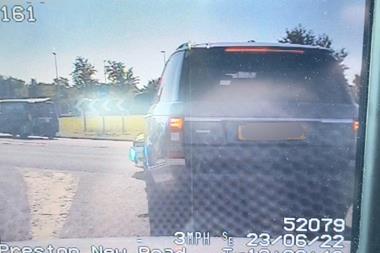

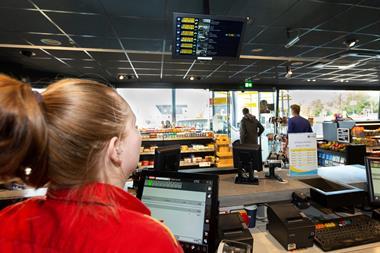
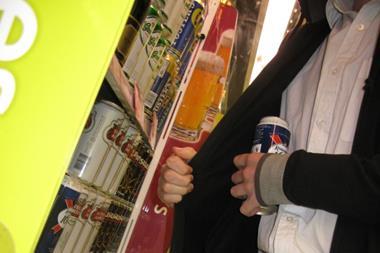
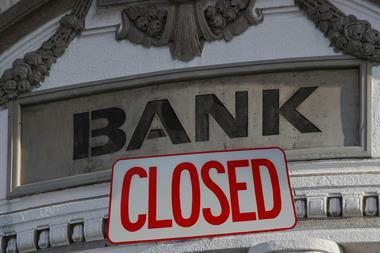

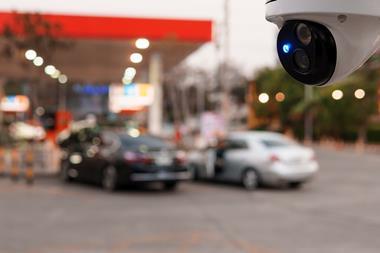

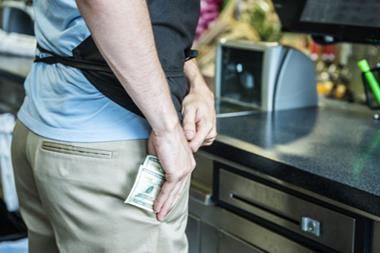
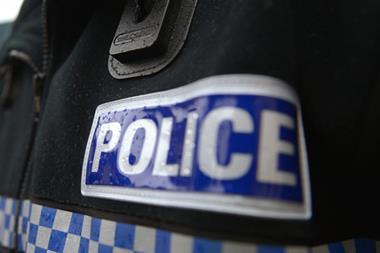
No comments yet